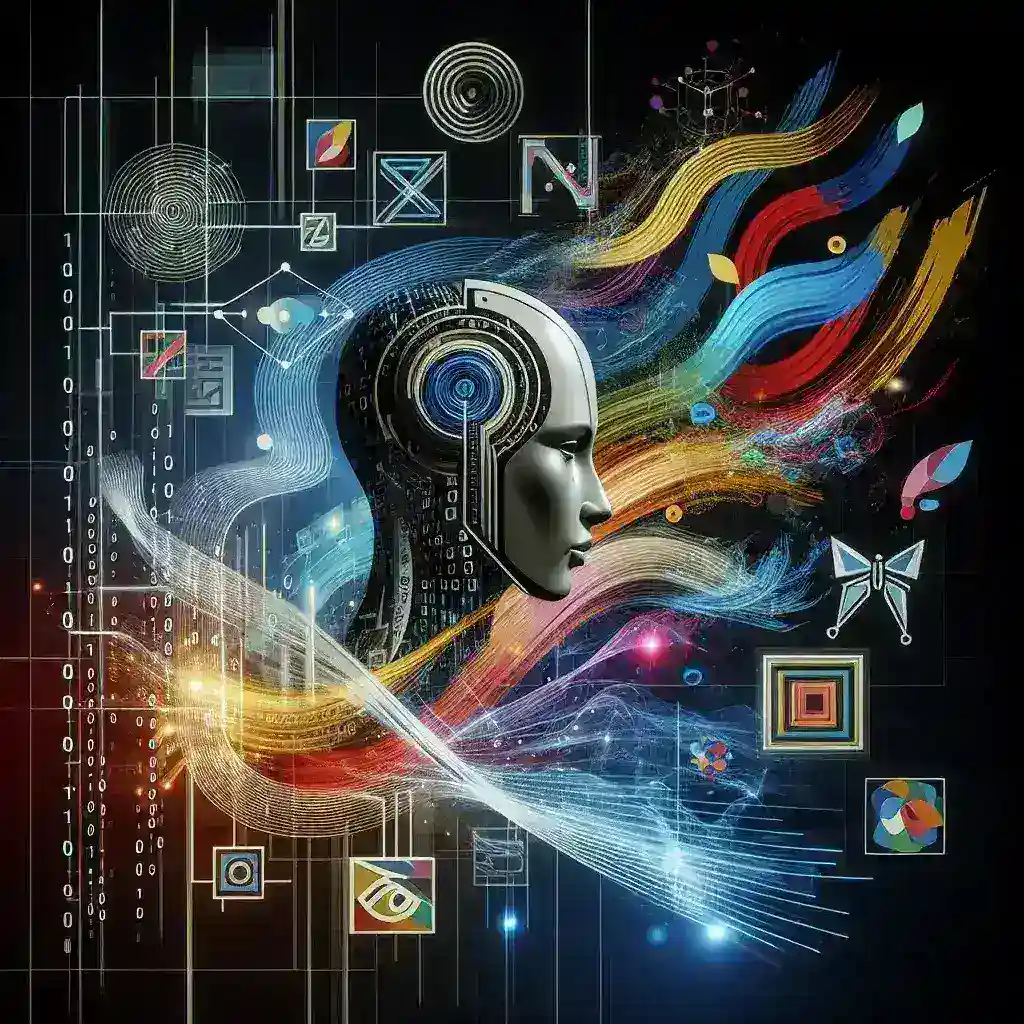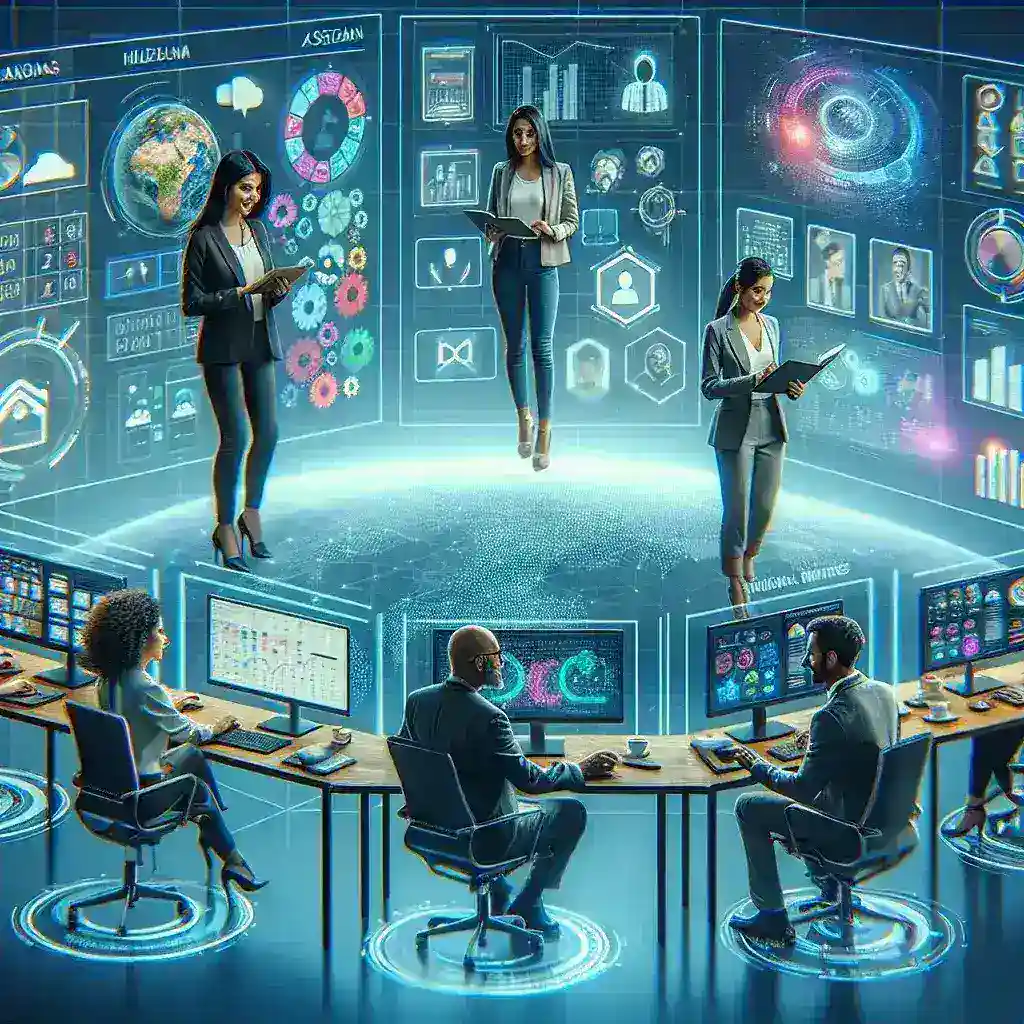The Dawn of Artificial Intelligence in Logo Design
In the rapidly evolving landscape of digital marketing and brand development, artificial intelligence has emerged as a game-changing force that’s reshaping how businesses approach logo creation. Gone are the days when creating a professional logo required extensive design skills, hefty budgets, or weeks of back-and-forth with graphic designers. Today’s AI-powered logo generators are democratizing brand identity creation, making it possible for startups, small businesses, and entrepreneurs to develop compelling visual identities in minutes rather than months.
The intersection of machine learning algorithms and creative design has birthed a new era where artificial intelligence can analyze design trends, understand brand requirements, and generate countless logo variations that would have taken human designers hours or days to conceptualize. This technological revolution isn’t just about speed and convenience; it’s fundamentally changing how we think about creativity, accessibility, and the democratization of professional design services.
Understanding AI-Powered Logo Creation Technology
At its core, AI logo creation relies on sophisticated machine learning algorithms trained on vast datasets of existing logos, design principles, and visual elements. These systems utilize neural networks that can recognize patterns, understand color theory, comprehend typography relationships, and grasp the subtle nuances that make logos effective and memorable.
Deep Learning and Pattern Recognition
Modern AI logo generators employ deep learning techniques that analyze millions of successful logo designs across various industries. The algorithms learn to identify what makes certain combinations of colors, fonts, and symbols work well together, understanding principles like balance, contrast, and visual hierarchy without explicit programming for each design rule.
Natural Language Processing
Many AI logo creation platforms incorporate natural language processing capabilities, allowing users to describe their brand vision in plain English. The AI interprets these descriptions, extracting key concepts about industry, style preferences, target audience, and brand personality to inform the design generation process.
The Revolutionary Benefits of AI Logo Creation
The adoption of artificial intelligence in logo design brings numerous advantages that are transforming how businesses approach brand identity development. These benefits extend far beyond simple cost savings, touching on accessibility, speed, and creative exploration.
Unprecedented Accessibility and Affordability
Traditional logo design services often come with price tags ranging from hundreds to thousands of dollars, putting professional brand identity out of reach for many small businesses and startups. AI-powered logo generators have dramatically reduced these barriers, offering professional-quality designs for a fraction of traditional costs. This democratization means that a local bakery, tech startup, or freelance consultant can access the same quality of design tools that were once exclusive to large corporations with substantial marketing budgets.
Lightning-Fast Iteration and Exploration
Where human designers might produce a handful of concepts over several days, AI systems can generate hundreds of variations in minutes. This rapid iteration capability allows business owners to explore multiple design directions simultaneously, comparing different approaches and refining their vision in real-time. The speed advantage becomes particularly valuable during rebranding efforts or when launching new product lines under tight deadlines.
Data-Driven Design Decisions
AI logo generators don’t rely on subjective artistic judgment alone; they leverage data from successful brands across industries to inform design choices. This analytical approach ensures that generated logos incorporate proven design principles and industry-specific visual conventions that resonate with target audiences.
Popular AI Logo Creation Platforms and Tools
The market for AI-powered logo design tools has exploded in recent years, with numerous platforms offering varying levels of sophistication and customization. Understanding the landscape helps businesses choose the right tool for their specific needs.
Leading Market Players
Looka (formerly Logojoy) stands out as one of the pioneers in AI logo generation, using machine learning to create logos based on user preferences and industry requirements. The platform’s algorithm considers color psychology, font pairing, and symbol relevance to generate contextually appropriate designs.
Brandmark takes a more analytical approach, incorporating extensive research on logo effectiveness and brand recognition. Their AI system analyzes successful logos across different industries to understand what visual elements contribute to memorability and brand recall.
Tailor Brands offers a comprehensive brand identity solution that extends beyond logo creation to include business cards, social media assets, and brand guidelines. Their AI considers the broader brand ecosystem when generating logo designs.
Specialized Features and Capabilities
Modern AI logo generators offer increasingly sophisticated features that rival traditional design processes. Many platforms now include vector output capabilities, ensuring logos remain crisp at any size. Advanced color palette suggestions consider psychological impacts and industry standards, while intelligent font pairing algorithms ensure typographic harmony.
The Creative Process: How AI Generates Logos
Understanding the methodology behind AI logo creation reveals the sophisticated processes that transform user inputs into polished brand identities. The journey from concept to completion involves multiple algorithmic steps that mirror and enhance traditional design workflows.
Input Analysis and Brand Understanding
The process begins with comprehensive input analysis, where AI systems parse user-provided information about business type, target audience, style preferences, and competitive landscape. Advanced platforms can analyze existing brand materials, websites, and even social media presence to understand brand personality and positioning.
Symbol and Icon Generation
AI algorithms access vast libraries of symbols, icons, and graphic elements, intelligently selecting and combining elements that align with the brand’s industry and personality. The systems can create entirely new symbols by combining existing elements or generate abstract representations of brand concepts.
Typography and Color Optimization
Font selection algorithms consider readability, brand personality, and industry appropriateness when pairing typefaces with symbols. Color palette generation takes into account psychological associations, cultural considerations, and competitive differentiation to create harmonious and effective color schemes.
Quality Considerations and Limitations
While AI logo creation offers remarkable capabilities, understanding its limitations helps set appropriate expectations and guides effective utilization of these tools.
Originality and Uniqueness Challenges
AI systems generate designs based on existing patterns and successful examples, which can sometimes result in logos that feel familiar or derivative. While the combinations may be unique, the underlying elements often draw from established design conventions, potentially limiting true innovation.
Context and Nuance Understanding
Despite advances in natural language processing, AI systems may struggle with subtle cultural references, complex brand narratives, or highly specialized industry requirements that human designers would intuitively understand. The technology excels at pattern recognition but may miss nuanced brand positioning opportunities.
Emotional Resonance and Storytelling
Human designers bring emotional intelligence and storytelling capabilities that current AI systems cannot fully replicate. The ability to translate complex brand narratives into visual metaphors or create designs that evoke specific emotional responses remains a distinctly human strength.
Industry Impact and Professional Design Evolution
The rise of AI logo creation is reshaping the graphic design industry, creating new opportunities while challenging traditional business models. This transformation extends beyond simple automation to fundamental changes in how design services are delivered and valued.
Democratization of Design Access
AI tools have made professional-quality logo design accessible to businesses that previously couldn’t afford custom design services. This democratization has expanded the overall market for brand identity services while pushing professional designers to focus on higher-value, more strategic work.
Enhanced Designer Productivity
Rather than replacing human designers, many AI tools are becoming powerful assistants that enhance creative productivity. Professional designers increasingly use AI for initial concept generation, rapid prototyping, and exploring design alternatives, freeing up time for strategic thinking and client consultation.
Evolving Client Expectations
The speed and affordability of AI logo generation have shifted client expectations around turnaround times and pricing. Design professionals must adapt their service offerings to emphasize strategic value, brand consultation, and comprehensive identity systems that extend beyond simple logo creation.
Best Practices for AI Logo Creation
Maximizing the effectiveness of AI logo generators requires understanding how to provide optimal inputs and evaluate generated outputs. Following established best practices ensures better results and more successful brand identity development.
Providing Comprehensive Input
The quality of AI-generated logos directly correlates with the quality and specificity of input information. Detailed descriptions of business goals, target audience characteristics, competitive landscape, and style preferences help AI systems generate more relevant and effective designs.
Iterative Refinement Process
Successful AI logo creation involves multiple rounds of generation and refinement. Users should experiment with different input parameters, explore various style directions, and gradually refine their preferences based on generated options.
Post-Generation Customization
While AI systems provide excellent starting points, final logo success often depends on thoughtful customization and refinement. This might involve color adjustments, typography modifications, or symbolic element refinements that align the design more closely with specific brand requirements.
Future Trends and Technological Advancement
The future of AI logo creation promises even more sophisticated capabilities as machine learning algorithms become more advanced and datasets grow larger and more diverse.
Enhanced Personalization and Context Awareness
Future AI systems will likely incorporate more sophisticated context understanding, analyzing not just explicit user inputs but also implicit signals from business websites, social media presence, and market positioning to generate more personalized and strategically aligned designs.
Integration with Broader Brand Identity Systems
The next generation of AI design tools will likely extend beyond logo creation to comprehensive brand identity development, automatically generating coordinated visual systems including color palettes, typography hierarchies, and application guidelines.
Real-Time Market Analysis and Trend Integration
Advanced AI systems may incorporate real-time analysis of design trends, competitor activities, and market dynamics to ensure generated logos remain contemporary and competitively differentiated.
Making the Right Choice for Your Brand
Selecting between AI logo generation and traditional design services depends on multiple factors including budget, timeline, complexity requirements, and long-term brand strategy. Understanding these considerations helps businesses make informed decisions about their brand identity development approach.
For startups and small businesses with limited budgets and straightforward branding needs, AI logo generators offer an excellent starting point that can evolve with business growth. Larger organizations or brands with complex positioning requirements may benefit from combining AI-generated concepts with professional design consultation to achieve optimal results.
The future of logo creation lies not in choosing between artificial intelligence and human creativity, but in understanding how to leverage both approaches effectively. As AI technology continues advancing, the most successful brand identity projects will likely combine the speed and accessibility of artificial intelligence with the strategic insight and emotional intelligence that human designers provide.
Whether you’re launching a new venture or refreshing an established brand, AI logo creation tools offer unprecedented opportunities to explore creative possibilities, test different approaches, and develop professional brand identities that effectively communicate your unique value proposition in an increasingly competitive marketplace.








Leave a Reply